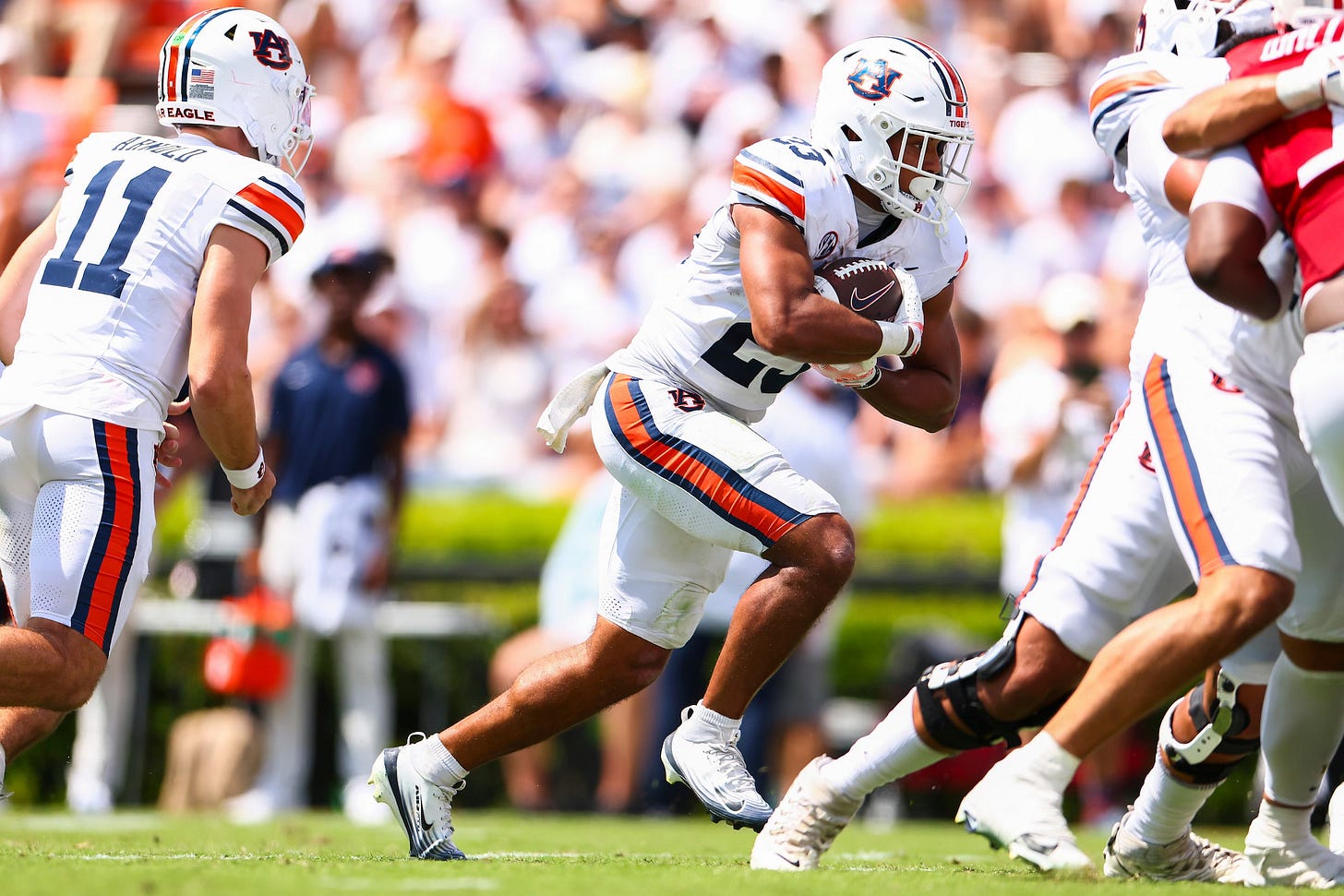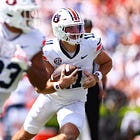Auburn is running the dang ball. It can't afford to stop that.
The Tigers lead the nation in EPA per rush right now. But will they remember the lesson from last year's loss to Oklahoma?
AUBURN — Through the first three weeks of college football season, you could make the argument that no FBS team is getting more out of its running game than Auburn.
Now, who would have predicted that just a few weeks ago?
Auburn entered 2025 with so much unknown about its running game. With Jarquez Hunter out of eligibility and off to the NFL, Auburn’s leading returning rusher had less than 700 career yards in three seasons. The most proven back at the collegiate level in the room was a transfer from UConn. And the Tigers were coming off the program’s lowest mark for average rushing attempts per game (33.67) since 1997.
Meanwhile, the hype around Hugh Freeze’s Year 3 offense was — of course — about the passing attack. Jackson Arnold transferred to Auburn after a rough season at Oklahoma still armed with his 5-star pedigree. Wideout Eric Singleton Jr. was one of the best players who transferred in the sport. He joined up with Cam Coleman, Malcolm Simmons, Perry Thompson, Bryce Cain and veteran transfer Horatio Fields to build a receiver room that was widely believed to be the best in the SEC.
Yet, here we are, heading into Auburn’s SEC opener at Arnold’s former home of Oklahoma in Week 4, with the Tigers running the ball at an elite level.
According to CFB-Graphs, Auburn is No. 1 in the nation heading into Week 4 for EPA per rushing play. EPA, or Expected Points Added, assigns a scoring value to every play in a college football game that’s compared to the average result in that exact situation. It takes down, distance and location into account instead of just yardage.
To put it another way, Auburn’s rushing attack has been the most valuable in the country through the first three weeks of the season.
The traditional counting stats are strong, too. Auburn is No. 22 nationally in rushing yards per carry (5.81) and No. 16 in rushing yards per game (242). The Tigers are only one of just 15 teams in the country that has already scored double-digit touchdowns on the ground with 10 in three games. Keep in mind that Auburn only had 13 rushing touchdowns in 12 games last season.
Of course, those numbers require context. The toughest defense Auburn has faced so far, Baylor, is No. 71 in Defensive SP+ and sat back in a two-high shell almost the entire game in Week 1. Auburn ran for 307 yards and four touchdowns against it.
The next two opponents, Ball State and South Alabama, were easily overmatched in the talent department — particularly at the line of scrimmage. Auburn averaged 6.59 yards per carry against Ball State before an even 5.00 against South Alabama. The Tigers had three rushing touchdowns in both paycheck wins.
There’s no question that the degree of difficulty for Auburn’s offense will jump exponentially this weekend at Oklahoma. The Sooners have had one of the most dominant defenses in the country during their 3-0 start, which includes a 24-13 home win over Michigan in Week 2.
And Auburn has already openly talked about wanting to do more with its vertical passing game after a rather vanilla first three weeks of the season.
But Auburn’s renewed commitment to running the rock can’t go away just because the challenges are about to get much tougher.
In fact, it could be the Tigers’ key to survival.




